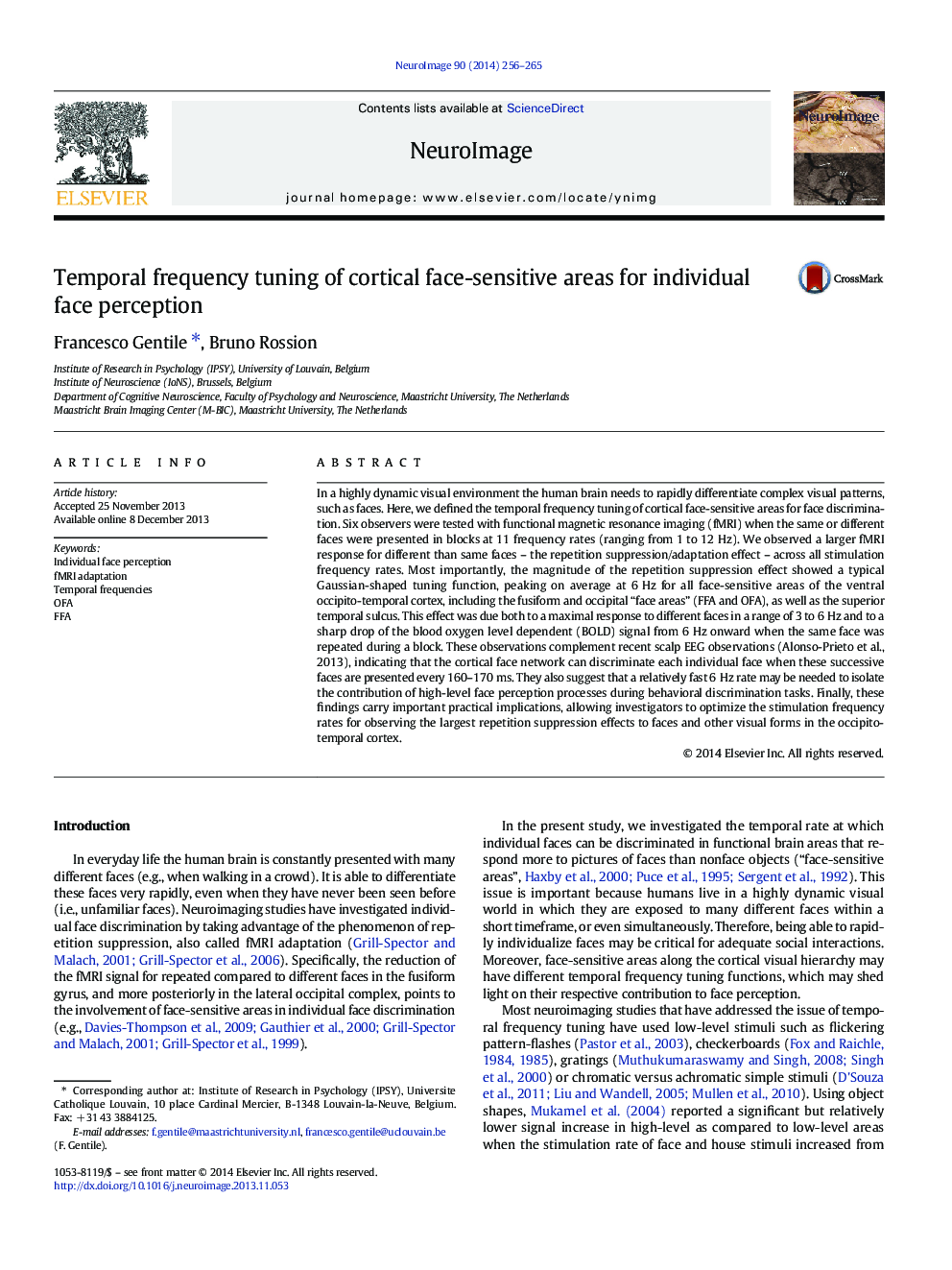| Article ID | Journal | Published Year | Pages | File Type |
|---|---|---|---|---|
| 6027385 | NeuroImage | 2014 | 10 Pages |
Abstract
In a highly dynamic visual environment the human brain needs to rapidly differentiate complex visual patterns, such as faces. Here, we defined the temporal frequency tuning of cortical face-sensitive areas for face discrimination. Six observers were tested with functional magnetic resonance imaging (fMRI) when the same or different faces were presented in blocks at 11 frequency rates (ranging from 1 to 12Â Hz). We observed a larger fMRI response for different than same faces - the repetition suppression/adaptation effect - across all stimulation frequency rates. Most importantly, the magnitude of the repetition suppression effect showed a typical Gaussian-shaped tuning function, peaking on average at 6Â Hz for all face-sensitive areas of the ventral occipito-temporal cortex, including the fusiform and occipital “face areas” (FFA and OFA), as well as the superior temporal sulcus. This effect was due both to a maximal response to different faces in a range of 3 to 6Â Hz and to a sharp drop of the blood oxygen level dependent (BOLD) signal from 6Â Hz onward when the same face was repeated during a block. These observations complement recent scalp EEG observations (Alonso-Prieto et al., 2013), indicating that the cortical face network can discriminate each individual face when these successive faces are presented every 160-170Â ms. They also suggest that a relatively fast 6Â Hz rate may be needed to isolate the contribution of high-level face perception processes during behavioral discrimination tasks. Finally, these findings carry important practical implications, allowing investigators to optimize the stimulation frequency rates for observing the largest repetition suppression effects to faces and other visual forms in the occipito-temporal cortex.
Keywords
Related Topics
Life Sciences
Neuroscience
Cognitive Neuroscience
Authors
Francesco Gentile, Bruno Rossion,
